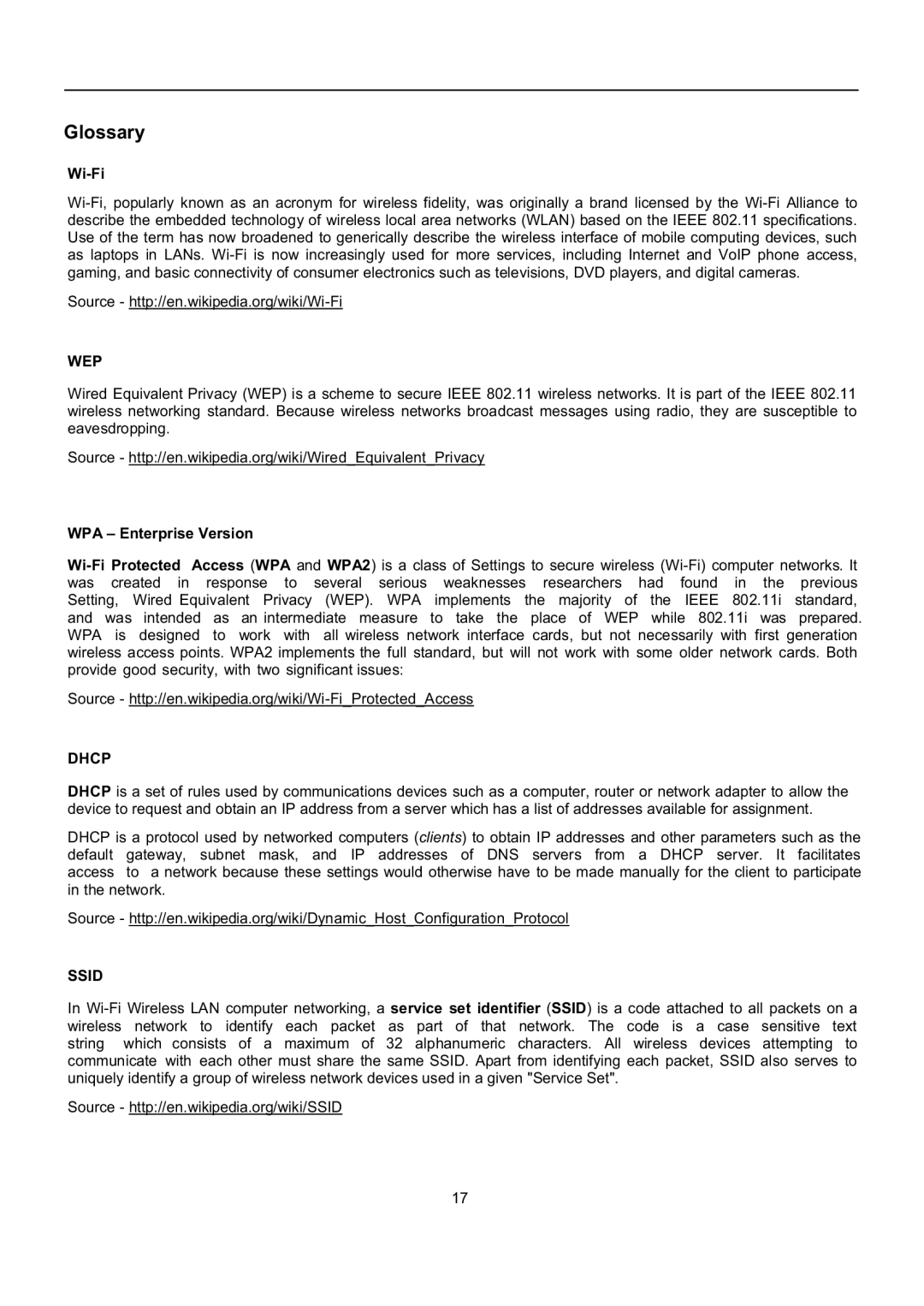Glossary
Wi-Fi
Source -
WEP
Wired Equivalent Privacy (WEP) is a scheme to secure IEEE 802.11 wireless networks. It is part of the IEEE 802.11 wireless networking standard. Because wireless networks broadcast messages using radio, they are susceptible to eavesdropping.
Source - http://en.wikipedia.org/wiki/Wired_Equivalent_Privacy
WPA – Enterprise Version
was | created in | response | to several serious weaknesses researchers | had | found | in | the | previous | |
Setting, | Wired Equivalent Privacy (WEP). WPA implements the majority of | the | IEEE | 802.11i | standard, | ||||
and | was | intended as an intermediate measure to take the place of WEP | while 802.11i | was | prepared. | ||||
WPA | is | designed | to work | with all wireless network interface cards, but not | necessarily with | first | generation | ||
wireless access points. WPA2 implements the full standard, but will not work with some older network cards. Both provide good security, with two significant issues:
Source -
DHCP
DHCP is a set of rules used by communications devices such as a computer, router or network adapter to allow the device to request and obtain an IP address from a server which has a list of addresses available for assignment.
DHCP is a protocol used by networked computers (clients) to obtain IP addresses and other parameters such as the default gateway, subnet mask, and IP addresses of DNS servers from a DHCP server. It facilitates access to a network because these settings would otherwise have to be made manually for the client to participate in the network.
Source - http://en.wikipedia.org/wiki/Dynamic_Host_Configuration_Protocol
SSID
In
Source - http://en.wikipedia.org/wiki/SSID
17
